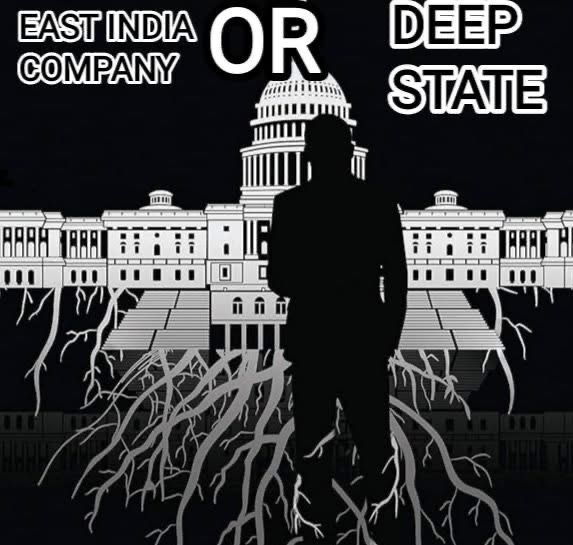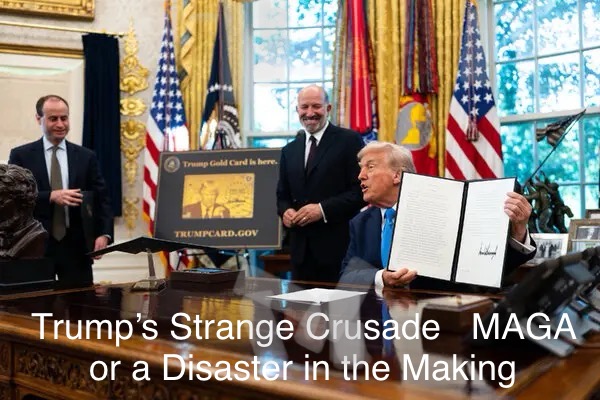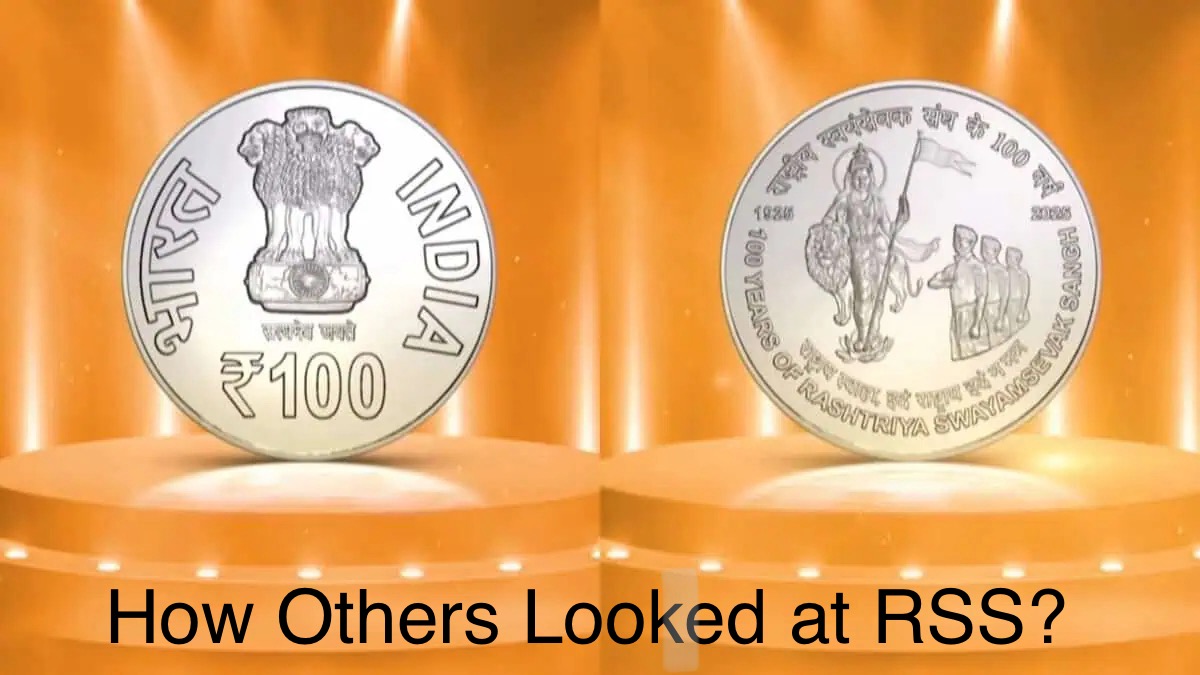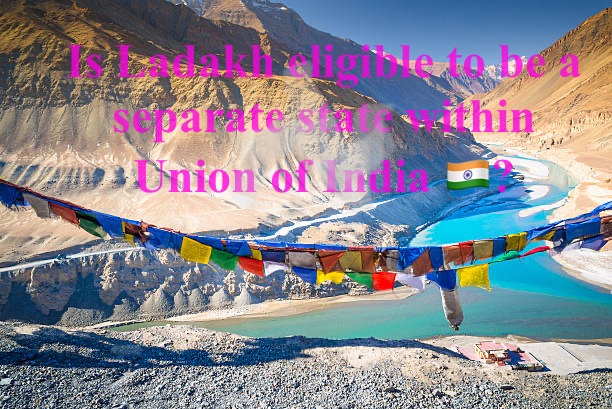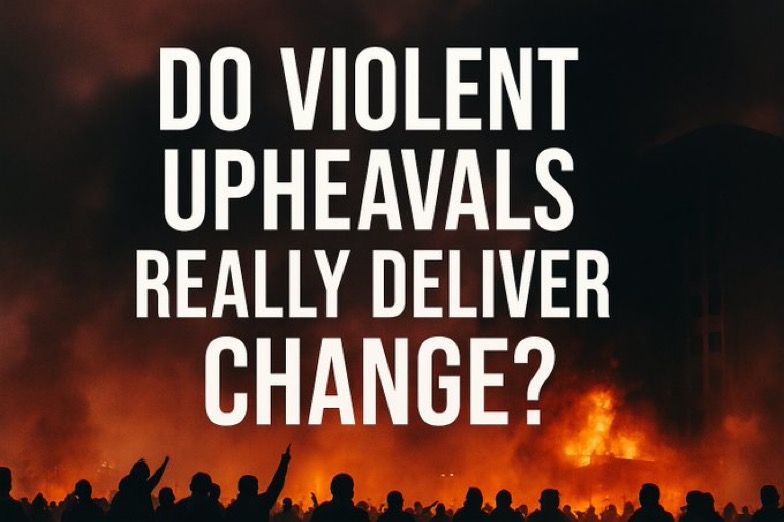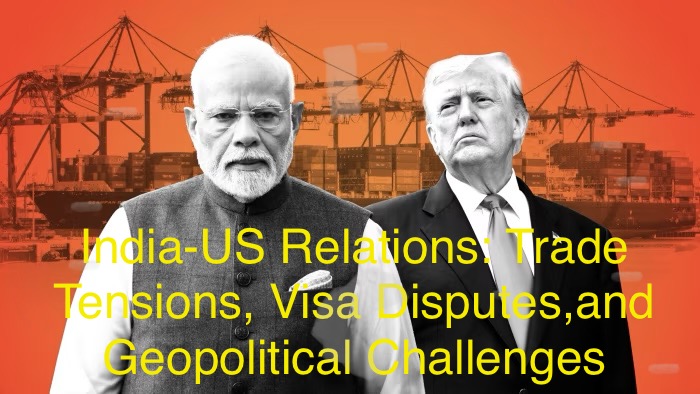
India–US Relations Are Facing a New Low Amid Rising Tensions. India–US relations appear to be deteriorating steadily, with tensions escalating on multiple fronts. What began with pressure on India to stop purchasing Russian oil during the Russia–Ukraine conflict has now spiraled into a series of contentious developments. The United States imposed a steep 25% tariff on Indian oil imports from Russia—an action widely viewed as unfair, especially considering that countries like Europe, Turkey, and China remain heavily dependent on Russian energy without facing similar penalties.
Further straining relations, former President Donald Trump expressed disappointment over India’s refusal to nominate him for the Nobel Peace Prize and for not crediting him with the ceasefire during Operation Sindoor, a high-stakes military exchange between India and Pakistan. During the operation, India targeted and allegedly struck critical Pakistani military assets, including the Nur Khan Airbase and suspected nuclear sites. It is also widely speculated that US-made F-16 fighter jets in Pakistan’s arsenal were damaged during the strikes. With alleged military backing from Turkey, China, and the US, Pakistan was unable to withstand India’s offensive and reportedly sought US mediation for a ceasefire. India, however, firmly invoked the Shimla Agreement, asserting that all India–Pakistan matters are bilateral and advising the US to ask Pakistan to directly contact India’s military leadership. This diplomatic rebuff was seen as a blow to Trump’s attempts to claim credit for de-escalation and contributed to a visible strain in his rapport with Prime Minister Modi.
Another major point of friction has been the issue of H-1B visas, a long-standing source of tension in bilateral ties. With trade negotiations stalling and tariffs failing to pressure the Indian government, the current US administration has allegedly introduced a $100,000 fee on new H-1B petitions—a move that effectively reduces the number of applications to near zero. While intended as leverage in trade talks, it is unlikely to push India into making concessions.
India and the United States have long shared a complex and evolving relationship, marked by cooperation, competition, and at times, outright conflict. While strategic interests have brought the two democracies closer over the past decade, a growing list of unresolved issues—ranging from trade tariffs and visa fees to differing geopolitical stances on major global crises—continues to test the strength of the partnership.
Here’s a closer look at the key friction points in India–US relations today.
Tariffs and Trade Disputes: A Stubborn Stalemate
Trade remains one of the most contentious aspects of India–US relations. The United States has consistently criticized India’s high tariffs on a range of goods, particularly agricultural products, electronics, and motorcycles.
Indian tariffs are generally not country-specific; they are structured to protect domestic industries and follow the principles of the World Trade Organization (WTO). India typically applies Most Favored Nation (MFN) tariffs to all WTO members, unless a preferential trade agreement or retaliatory measure is in place.
India has signed Free Trade Agreements (FTAs) and preferential trade deals with several countries and blocs—such as ASEAN, Japan, South Korea, SAFTA (South Asian Free Trade Area), the UAE (CEPA), and Australia (ECTA). These partners benefit from reduced or zero tariffs on selected goods, based on mutual arrangements.
However, India has occasionally imposed country-specific retaliatory tariffs. For instance, in 2019, the Trump administration revoked India’s access to the Generalized System of Preferences (GSP), impacting approximately $5.6 billion worth of Indian exports. In response—after the US also raised tariffs on Indian steel and aluminum—India imposed retaliatory tariffs on 28 US products, including almonds, apples, and walnuts. One prominent example that captured public attention was the tariff on Harley-Davidson motorcycles, which became symbolic of the broader trade tensions.
Despite US complaints, Indian tariffs are designed not to target specific countries but to protect indigenous businesses and maintain supply-demand balance. India opens its markets only when domestic production cannot meet demand. This principle applies to both imports and exports.
In contrast, US tariff policy often appears selective and self-serving. Many American sectors—such as pharmaceuticals—are conveniently excluded from broader tariff measures. The imposition of an additional 25% tariff on India for purchasing Russian oil was particularly unjustified, especially since the same rule did not apply to European nations, and had not been extended to China until very recently.
Although there was initial optimism for a limited trade agreement to resolve some of these issues, negotiations have stalled. The hardline approach taken by former President Donald Trump—widely perceived as bullying and pressurizing India—has only further complicated progress. Without a more balanced and respectful negotiation strategy, a mutually beneficial trade deal remains out of reach.
The H-1B Visa Controversy: Economic Logic vs. Political Posturing
The H-1B visa program has long been a cornerstone of the US economy, particularly in the technology, healthcare, and engineering sectors. While the program brings high-skilled talent—primarily from India—to fill gaps in the American workforce, it has come under increased scrutiny in recent years, often becoming a political tool rather than a matter of sound economic policy.
On one hand, H-1B workers earn and spend in the US, contributing directly to the economy, paying taxes, and driving innovation, especially in startups and critical sectors like healthcare. On the other hand, outsourcing, which is less visible and often done offshore, leads to actual job relocation and loss of domestic spending. However, due to the visible presence of H-1B professionals in the US workforce, political narratives have unfairly targeted them—raising questions of whether such sentiment may be racially or economically motivated.
The recent proposal to impose a $100,000 fee on new H-1B petitions is seen by many as excessive and economically damaging. While likely intended as a negotiating tactic, such a fee would make it nearly impossible for startups and smaller companies to hire foreign talent. They would either move operations to countries like Canada or Mexico, which offer friendlier immigration policies and similar time zones, or outsource directly to India, further accelerating job movement outside the US.
Such a fee would not only stifle innovation but also impact foreign students in the US, who typically rely on H-1B visas after graduation. If implemented, this proposal could significantly undermine the US’s position as a hub for global talent. It also appears to be part of a broader strategy by former President Donald Trump to raise funds from every possible source, possibly to offset America’s ballooning debt, which currently stands at $36.2 trillion, against a GDP of $30.3 trillion, pushing the debt-to-GDP ratio to around 120%.
To illustrate the impact:
- Total H-1B workers in the US: ~600,000–700,000
- Proposed fee: $100,000 per H-1B annually
- Potential revenue raised: $60–70 billion
- US debt: $36.2 trillion → the impact is negligible
This approach appears short-sighted. H-1B holders represent only 0.36% of the total U.S. workforce (~168 million in 2023). While their numbers are modest in scale, their contributions are disproportionately significant—especially in STEM and medical sectors, where shortages are acute. For instance, in some remote areas, the only practicing cardiologist may be an H-1B doctor. This is largely due to insufficient residency slots and fellowship opportunities for medical graduates.
Historically, Indian nationals have dominated the H-1B visa program, making up nearly 65% of all visa holders, mostly in tech-related roles. Despite this, the Immigration Act of 1990 enforces a 7% cap per country for both family-based and employment-based green cards. For a country of India’s size and diversity, this results in an enormous backlog. Green cards for India annually (employment-based) 14,700 which is very small compared to the size of India.
The recent fee proposal caused panic within the H-1B community, with some even reportedly deboarding international flights after hearing the news. However, indications suggest that this fee might not affect current visa holders and is likely to be challenged legally, possibly resulting in more balanced legislation from Congress.
From India’s perspective, these measures seem discriminatory and are viewed as part of an increasingly protectionist US labor policy. Indian IT firms operating in the US have already been affected in terms of both profitability and operational scalability. However, India is relatively unfazed, as it produces 1.5 million engineers annually, and whether these professionals stay in the US or return home, they continue to contribute—either through direct economic activity in India or via remittances, which may also face new US taxation policies.
In the long run, restricting H-1B access may hurt America more than India. If skilled professionals are pushed away, they will strengthen India’s innovation ecosystem, bolster its economy, or help build up friendly competitors like Canada and Mexico. Ultimately, H-1B workers are not a liability—they are a strategic asset. Weakening this program may have long-term consequences that go beyond trade negotiations or short-term political gains.
Trade Deal Talks: Years of False Starts
Multiple rounds of trade negotiations have failed under both the Trump and Biden administrations. The deadlocks are often due to:
- US demands for greater access to Indian markets for dairy, poultry, and medical devices.
- India’s resistance to genetically modified (GM) crops.
- India’s desire for the restoration of GSP benefits.
- US opposition to India’s data localization policies and digital taxes.
Despite strong diplomatic rhetoric about shared economic goals, a comprehensive trade deal remains elusive. The US continues to push for greater market access for genetically modified (GM) crops such as corn and soybeans, aiming to tap into India’s vast agricultural sector. However, India has consistently resisted these efforts, citing concerns over environmental impact, biosafety, and the livelihoods of its farmers.
Prime Minister Narendra Modi has publicly and unequivocally stated in his rallies that India will not compromise when it comes to protecting the interests of farmers, fishermen, and dairy producers. Agriculture remains the lifeline of India, and the government has made it clear that it will safeguard this sector at all costs. This firm stance has likely frustrated US trade negotiators and even the President, who may view it as a roadblock in trade talks. There have been attempts—both direct and subtle—to pressure India into conceding, but it appears unlikely that India will yield under external pressure.
Had these negotiations remained behind closed doors, India might have been willing to consider limited measures. However, with the issue now in the public domain and under political scrutiny, any compromise would be seen as a betrayal of farmers’ interests. Public opposition to GM crops in India is strong, making concessions not only politically risky but also socially unacceptable. This further complicates the already fragile and prolonged trade negotiations between the two countries.
Russia–Ukraine War to India- Pakistan Skirmish : A Diplomatic Tightrope
The Russia–Ukraine conflict has exposed a growing divergence between Indian and American foreign policy. While the United States and its allies have imposed sweeping sanctions on Russia and called for global isolation of Moscow, India has opted for a position of strategic neutrality. New Delhi continues to purchase discounted Russian oil and maintain its long-standing defense cooperation with Russia—an indispensable partner in India’s defense ecosystem.
India’s reliance on Russia is rooted in decades of defense collaboration, with a significant portion of Indian military equipment and technology sourced from Russia. As one of the world’s largest oil importers, India also has to ensure energy security for its population. With countries like Venezuela and Iran under sanctions, a complete halt in Russian energy exports would spike global oil prices. It’s also been alleged—though not officially acknowledged—that the US and European nations privately requested India to refine Russian oil and help keep global energy prices in check, while avoiding formal diplomatic channels.
India has also been cautious not to abandon an old and trusted partner. During the 1971 war, it was Russia that stood firmly with India, while the US sided with Pakistan. Not much has changed today. When Pakistan was pleading for a ceasefire during India’s precision strikes under Operation Sindoor, the US was seen advocating on Pakistan’s behalf.
India, now a formidable military power, demonstrated its strength with modern defense capabilities, including the Russian-made S-400 air defense system and advanced anti-drone technologies developed in partnership with France and Israel. Allegedly, the US holds significant influence over Pakistan’s air defense and nuclear infrastructure. When India struck and neutralized key assets in these domains, it reportedly angered the US President.
The POTUS, allegedly at Pakistan’s request, asked India for a ceasefire. However, India invoked the Shimla Agreement, firmly stating that all India–Pakistan matters are bilateral and not subject to third-party mediation. Pakistan was advised to reach out to India’s Director General of Military Operations (DGMO) to discuss any ceasefire. This was reportedly seen as a diplomatic snub to the US, particularly undermining President Trump’s earlier claim that he played a role in brokering peace. The situation allegedly created a rift between Trump and Prime Minister Narendra Modi, which cast a shadow over India–US relations during that period.
This neutral stance on Ukraine has frustrated many American policymakers, with some even accusing India of indirectly supporting Russia’s war efforts. However, India has consistently defended its position as one guided by national interest, energy security, and strategic autonomy.
The Trump Nobel Peace Prize Episode: Diplomacy Meets Drama
Amid all this, former US President Donald Trump made headlines with an offhand or rhetorical suggestion that India should nominate him for the Nobel Peace Prize—likely referring to his involvement in Middle East diplomacy or his perceived role in de-escalating global conflicts. While this was never a serious policy demand, it reflects the performative and highly personalized nature of diplomacy during Trump’s tenure.
Indian officials largely ignored the comment, viewing it as political theater rather than a matter of substance. Pakistan, on the other hand, was quick to massage Trump’s ego and reportedly agreed to nominate him for the Nobel Peace Prize. There are also rumors suggesting that Pakistan has offered support for a cryptocurrency project linked to a member of Trump’s family.
The real issue is that Trump often treats Pakistan and India as equals—but they are not. India is on track to become the world’s third-largest economy and enjoys a strong people-to-people relationship with the United States. In contrast, Pakistan has repeatedly played both sides, shifting its allegiance between the US and China based on convenience.
The United States needs to think carefully before placing its trust in Pakistan once again. When the US was preparing to exit Afghanistan, both Pakistan and China were reportedly working behind the scenes with the Taliban to hasten America’s departure. This duplicity highlights the risks of relying on partners who prioritize short-term gains over long-term strategic alignment.
India–US Military and Defense Trade: From Buyers to Strategic Partners
Over the past two decades, India and the United States have transformed their defense relationship from limited interaction to a deep, strategic partnership. What began with cautious military engagement has now evolved into a robust defense trade and technological collaboration, driven by shared concerns over regional security, particularly in the Indo-Pacific.
Defense trade between the two nations has grown significantly—from virtually zero in 2008 to over $20 billion today. India has procured a range of high-end American military platforms, including C-17 Globemaster aircraft, Apache and Chinook helicopters, and P-8I maritime surveillance planes. This hardware has enhanced India’s operational capabilities across land, air, and sea, while also promoting interoperability with US forces.
Key enabling agreements such as LEMOA, COMCASA, and BECA have institutionalized cooperation, allowing for joint logistics, secure communications, and real-time intelligence sharing. In parallel, joint military exercises like Yudh Abhyas, Malabar, and Tiger Triumph have strengthened military-to-military coordination and strategic trust.
The partnership is now moving beyond procurement into co-development. Under the iCET framework, India and the US are collaborating on emerging technologies like artificial intelligence, cybersecurity, and even co-producing jet engines. The recent deal to manufacture GE’s F414 engines in India marks a breakthrough in defense technology transfer and local production.
Despite challenges such as India’s legacy dependence on Russian equipment and its commitment to strategic autonomy, both nations are aligning more closely in the face of China’s growing assertiveness. As the Indo-Pacific becomes the geopolitical center of gravity, India–US defense cooperation is poised to play a pivotal role in shaping regional stability and technological leadership.
The Bigger Picture: Cooperation Amidst Conflict
Despite these points of contention, India and the US continue to strengthen ties in strategic areas, particularly defense, technology, and counterbalancing China’s influence in the Indo-Pacific. The two countries participate in joint military exercises, collaborate under frameworks like the Quad, and are exploring cooperation in emerging areas like semiconductors and AI.
Conclusion: A Partnership Under Pressure
India–US relations are marked by both promise and peril. While there is mutual recognition of the strategic value of the partnership, persistent issues—ranging from trade and immigration to geopolitical alignments—continue to challenge the relationship.
India and the USA engage in significant trade and are increasingly interdependent, but the US often attempts to arm-twist India into choosing between the US and Russia, or the US and China. Did India ever ask the US to choose between India and Pakistan? Pakistan remains a trusted non-NATO ally of the US, despite multiple betrayals. When the US was searching for Osama Bin Laden in Afghanistan, the Pakistani Army was hiding him near a military cantonment in Abbottabad. Pakistan also refused to allow the US to evacuate its arms from Afghanistan, forcing the US to leave behind billions of dollars’ worth of defense equipment, including helicopters.
India’s foreign policy is independent, and it advocates for a multipolar world—not a unipolar or bipolar one with the US at its center. As India’s Foreign Minister rightly said in Europe: if we are not standing with A, that does not mean we are standing with B—we are holding our own ground. The US must treat India as an equal at the negotiation table and work toward a trade deal that is mutually beneficial. Egos have no place in trade; compromises are necessary to achieve meaningful outcomes.
The US has a golden opportunity to access a market of 1.4 billion people—if it truly understands India’s potential. It can boost its tourism industry by issuing more tourist visas to Indian travelers while ensuring that overstays are managed through effective deportation policies. This sector alone could attract trillions of dollars, as household spending in India is growing exponentially.
Recently, when Trump tried to pressure Apple CEO Tim Cook not to manufacture in India, Cook didn’t budge—because he understands India’s potential. Apple should continue to invest more in India, open additional Apple Stores, and make the iPhone more accessible. People were even flying from Delhi to Mumbai just to purchase one. The US must recognize its leadership in certain sectors and allow India the space to lead in others.
The US cannot afford to behave like a mediocre power focused on minor issues. Instead, it should focus on the big picture—like expanding the sale of modern defense equipment and aircraft to India. However, the US must also understand that if it sells the same defense technologies to Pakistan—its so-called trusted non-NATO ally—India will not purchase them and will prefer to rely on its long-standing and trusted partner, Russia.
As both nations navigate an increasingly multipolar world, their ability to manage differences while deepening cooperation will define the trajectory of one of the 21st century’s most consequential bilateral relationships.

